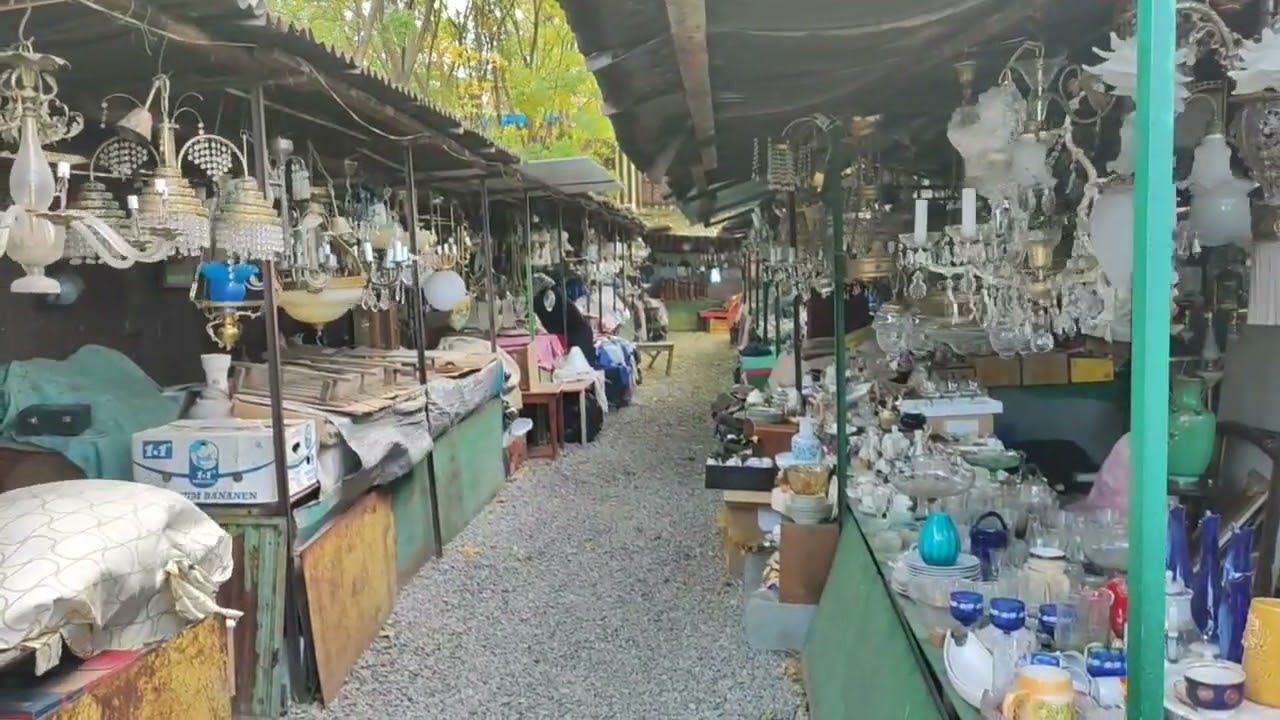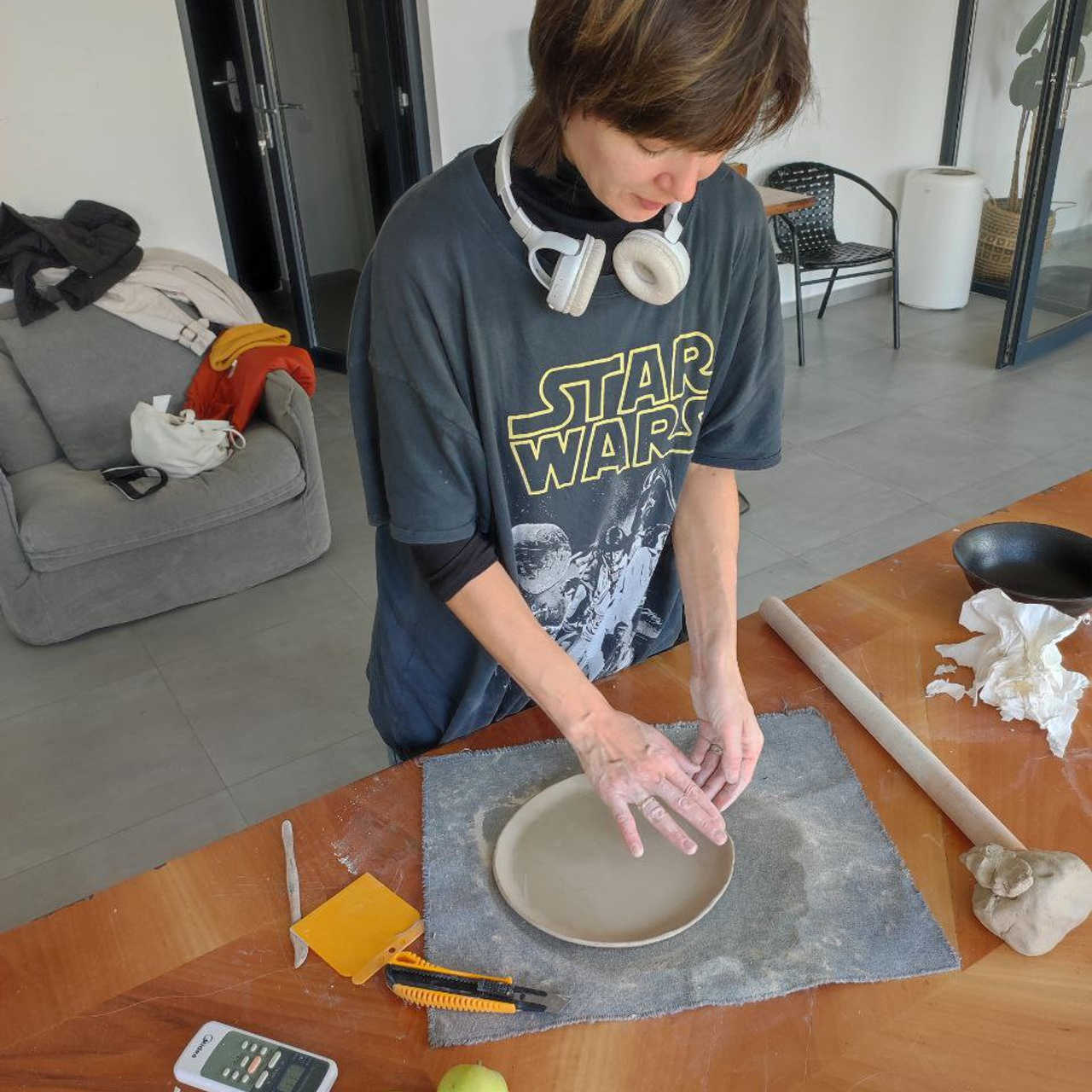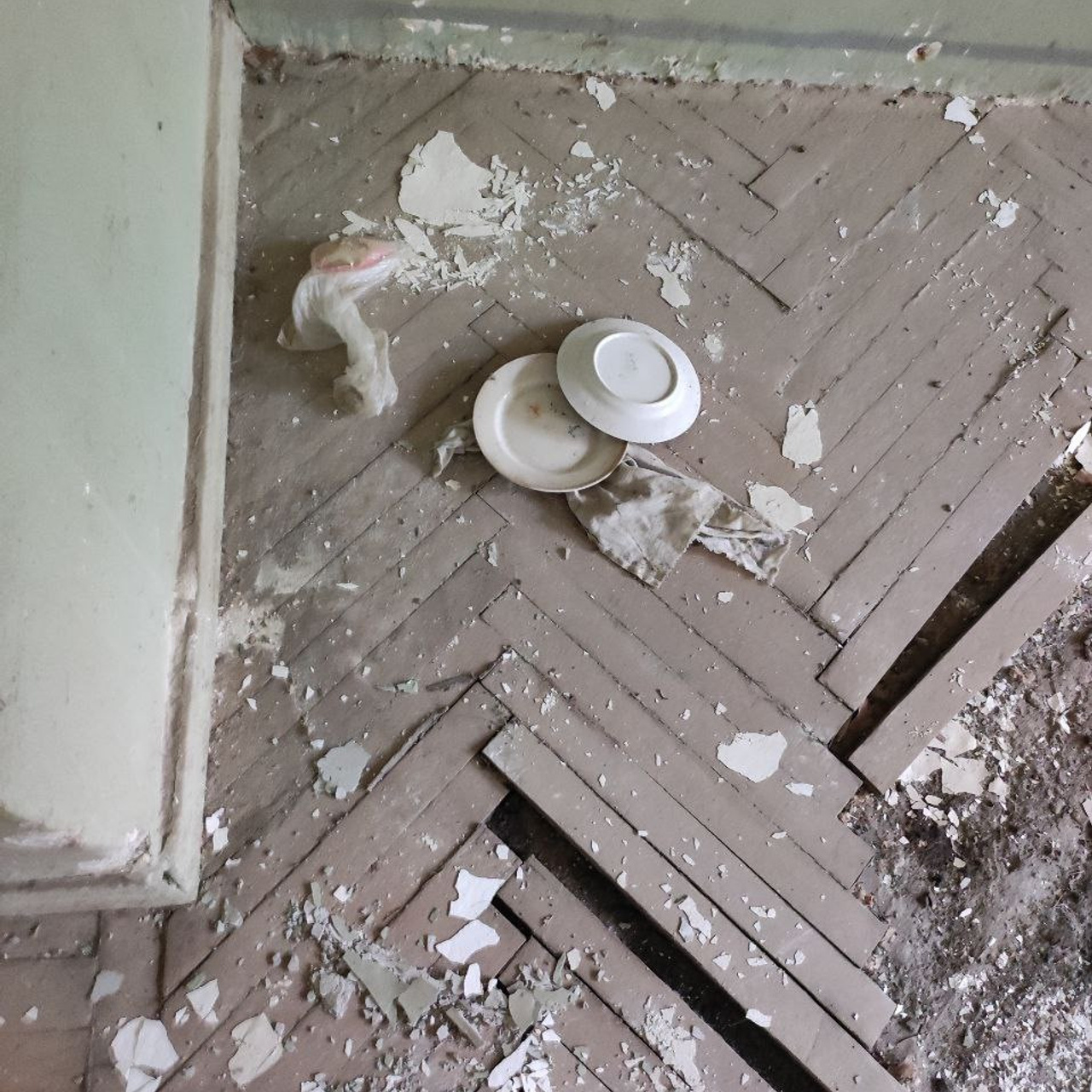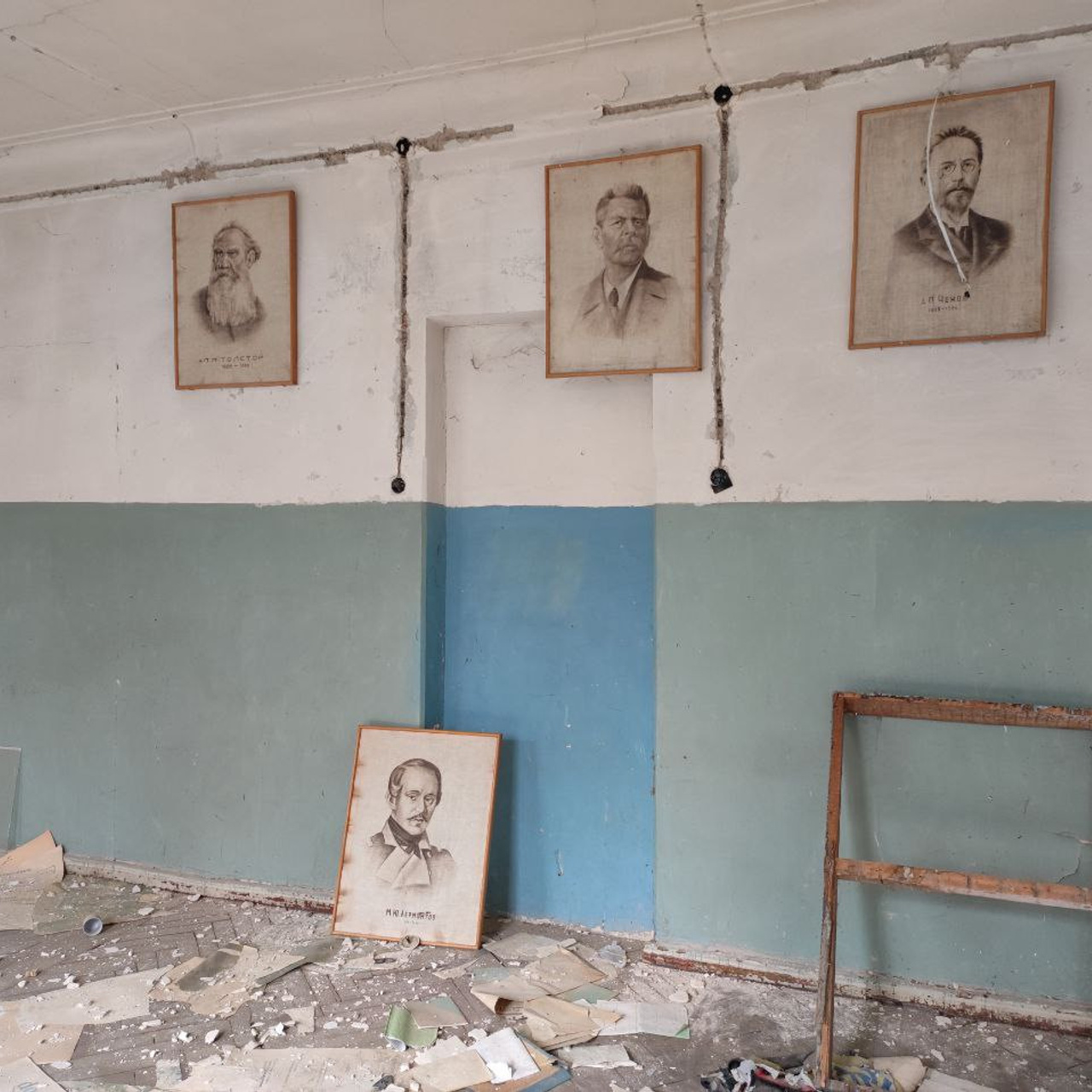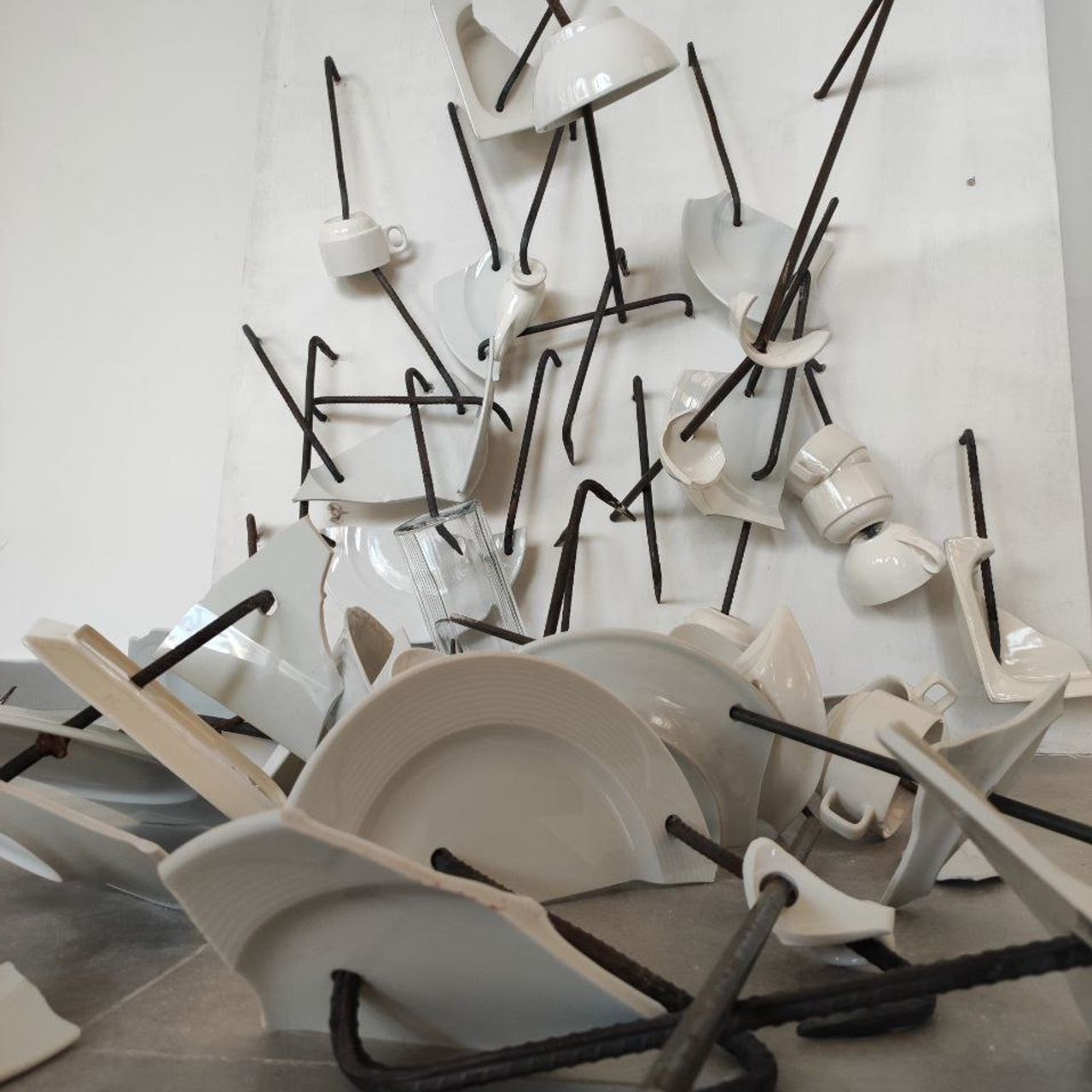KINTSUGI
This is my upcycling project for a residency program for artists in exile in Kachreti, Georgia, 17.10.22 — 17.12.22. The residency took place at Ria Keburia art hub, located on the territory of Ambassadori golf resort, a hotel with lots of visitors coming all year round. Keeping up the high standards of service, the resort gets rid of broken or damaged things, such as crockery. Living in the context of tragic and destructive events of the last year (and last 10± years) involving my home country and its neighbors, it was natural for me to focus on abundant broken tableware — the symbol of home, family unions, hospitality, and yet conflicts and damage.
Proposal sketch
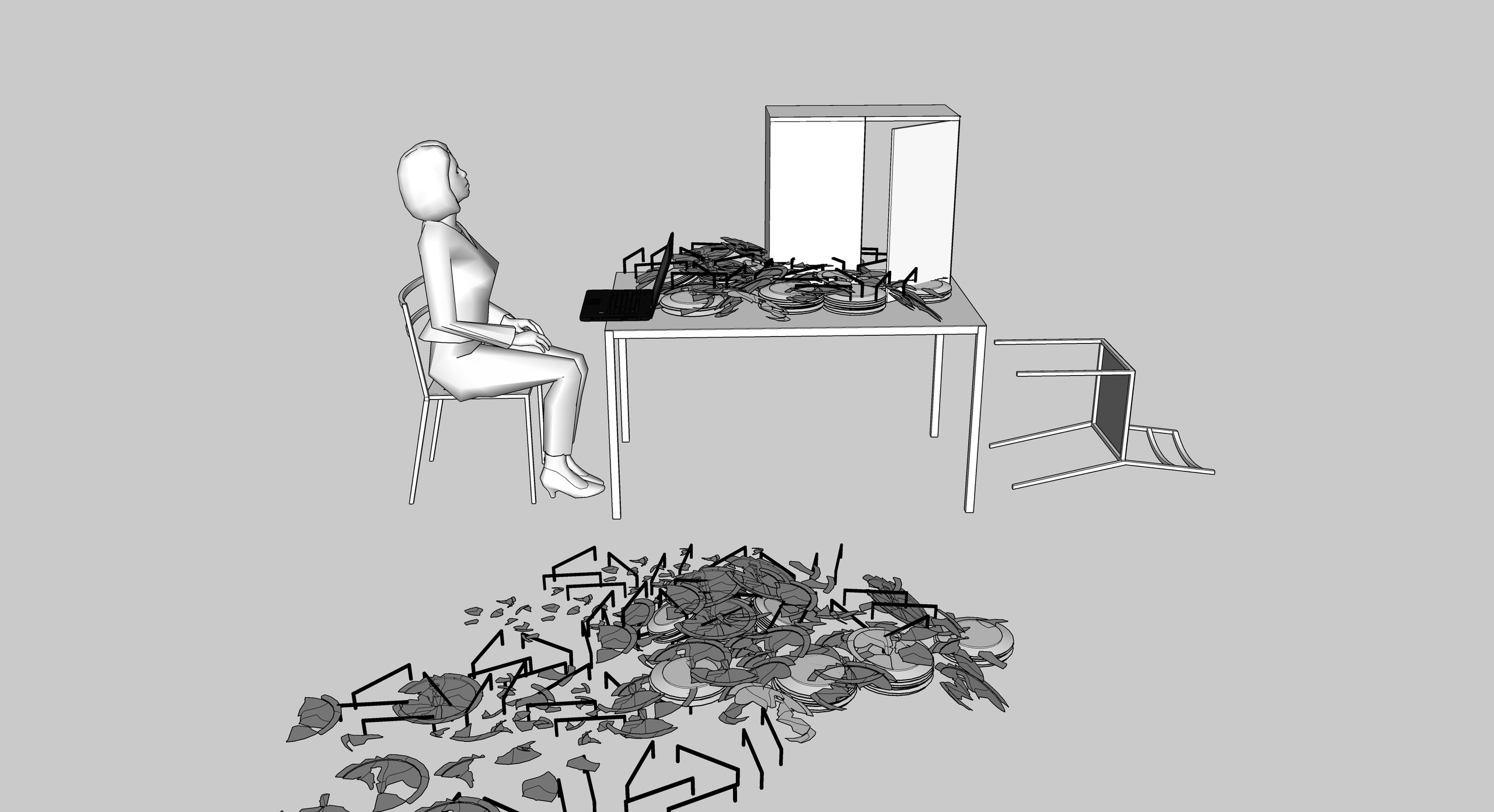
Despite reflection on the tragedy and its consequences I also look for ways to mend or heal. If we speak about dishes, there is kintsugi — “the Japanese art of repairing broken pottery by mending the areas of breakage with lacquer dusted or mixed with powdered gold, silver, or platinum” (Wikipedia).

Besides kintsugi, there were other ways to mend ceramics throughout human history. Craftsmen would drill holes in broken parts and connect them with staples or wire. Adhesives could also be used in this technique (see, for example, a history of mending chinaware here). This is the technique I am reproducing and making absurd in my project.
Illustration to the right is an image of a found mended plate from the Internet
Below are the pics of my objects/experiments




The discarded crockery from the hotel is generally mass-produced, universal, white, and plain. It is usually contemporary and can be found in the contemporary mass market. I wanted to look for other objects near the residency with a more specific and unique history. I went to the Dry Bridge flea market in Tbilisi and asked for broken dishware there. Usually, sellers would say that they normally did not keep broken items and just throw them away. I was lucky, though, to find one place, where there were some discarded dishes, and there was one old man who had several damaged things. He said, he felt sorry for them and didn’t want to get rid of them. I took some plates from him.
Below is a photo of washed discarded tableware from the Dry Bridge and some trademarks on the found objects



Below is a video from a Dry Bridge where I found discarded tableware from the Soviet times and/or individual history/character
This dishware mostly tells stories about the Soviet past of Georgia and other post-Soviet countries. There is another immensely rich level of history manifested in the local crockery — traditional Georgian earthenware kvevri and ketsi. I found some broken ketsis in the hotel kitchen and a discarded kvevri-shaped jug from a former artist resident at the Ria Keburia gallery, and I wanted to connect these historic vessels and dishes with modern neutral plates of the hotel and dishes from the Soviet period. Though this topic is too immense to be included in my current project.
THANKS
I hope, this is the beginning of my research of the unique and sometimes universal history of the place of my current residence expressed through tableware as an art research material. I really appreciate the warm welcome my family and I receive in Georgia and am grateful for all the hospitality we find here. Georgia is a beautiful country, and kind friendly people and rich history make it even more wonderful. I also want to express many thanks to the residency for the opportunity to gather my thoughts, collaborate and get acquainted with colleagues, and learn from people and the place. Personal thanks to Anna Otkhozoria, Teona Yamanidze, Anna Evtiugina, Oksana Yushko, Arthur Bondar, Daniil Dvinskikh, Peter Kroshchinskiy, Sveta @ho.oha who helped me make my first clay plates, Giorgi who helped me with welded staples and our friend Gela the dog. Thanks to Anton who helped me with some materials experiments. I also thank my dear husband Arsen and daughter Alina for their love and support and encouragement to take part in the residency.
Different images from the residency research and process

